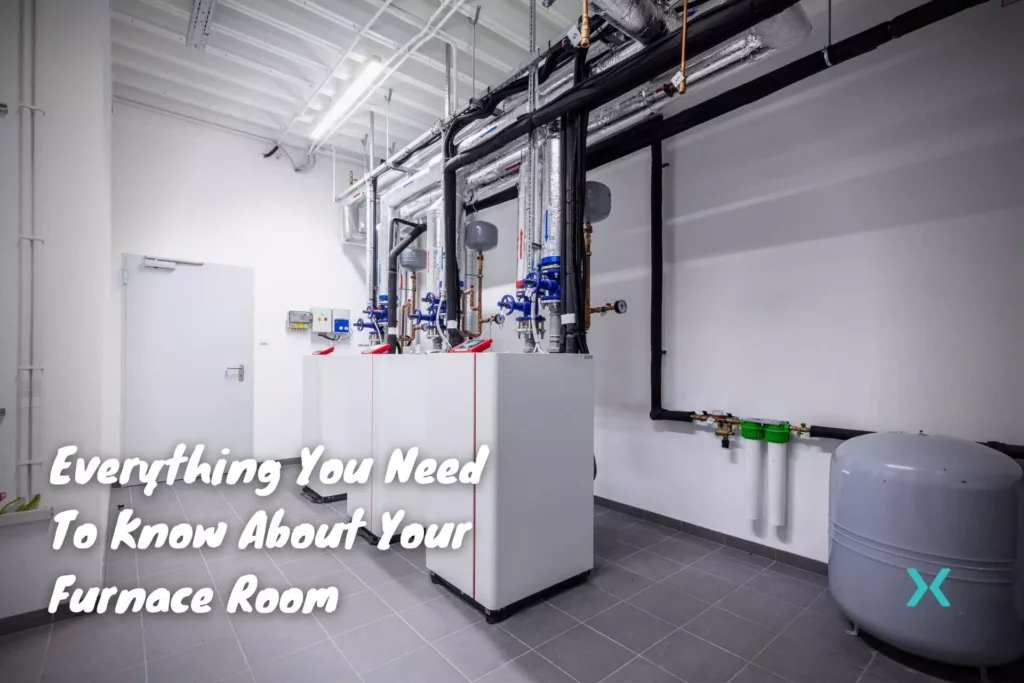Not many people think about why the furnace room exists, but there are multiple reasons for it.
For one, every home has mechanical equipment that probably doesn’t meet their design styles, so the best way to hide it is to jam it all into one small room in the basement.
Secondly, mechanical equipment uses electricity and combustible fuels, which can be dangerous if not installed according to local safety codes.
So, instead of applying all of those strict safety codes to the entire home, we can keep them confined to the basement furnace room (sometimes called a utility room).
As much as I would love it if there were set guidelines for furnace room safety codes, every municipality usually has its own.
They will be similar, but it’s extremely important that you do not DIY install your mechanical equipment, as knowing the specific codes for your municipality is required.
With that said, below are some requirements that you should be aware of.
Table of Contents
⭐ General Safety Code Requirements for Furnace Rooms
1. Clearance Requirements for Mechanical Equipment
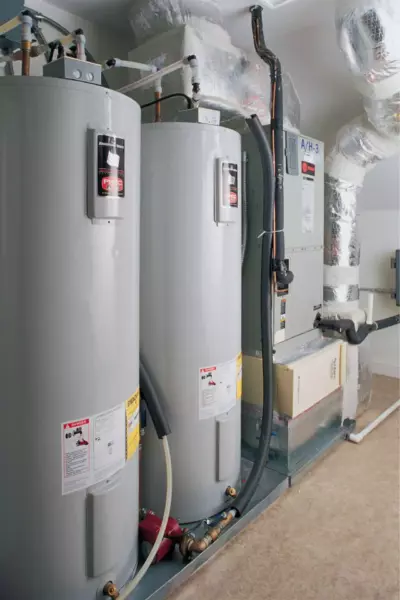
There are two reasons that clearance requirements are important:
- Clearance to combustible materials
- Clearance for service access
Clearance to Combustible Materials
Most furnace rooms include more than just a furnace.
They also have a water heater, air conditioning coils, heat pump, plumbing, gas, and drain lines.
The water heater and furnace usually use energy sources like natural gas, propane, oil, wood, or electricity.
When these energy sources are used, they create a significant amount of heat that is transferred to the medium used (air or water).
Because of this intense heat, the equipment manufacturers always recommend a minimum clearance of combustible materials.
That figure will be listed in the equipment’s installation manual.
Clearance for Service Access
This is the clearance that is usually not provided for, and to be honest, I can understand why.
As much as it’s important to be able to properly service a piece of equipment, every square foot of a home is expensive to build, and building enough space for an HVAC technician or plumber to easily access all sides of the equipment is hard to justify.
2. Combustible Air for Gas Fired Equipment
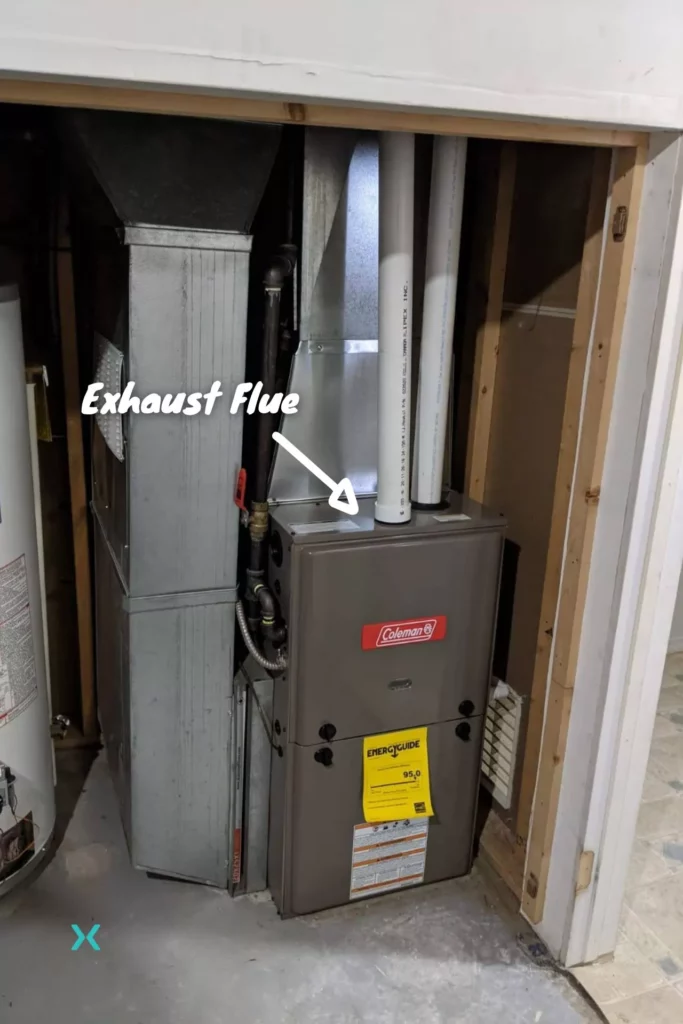
There are three main ways to provide combustion air for gas-fired equipment; fresh air to the room, using room air, and direct piping the combustion air.
If the room that the equipment is in is large enough (this size needs to be calculated by a professional HVAC technician), then there would be enough available air for the equipment to have complete combustion.
If the room isn’t large enough, then it won’t have proper ventilation, so there needs to be a duct installed going from outside directly to the furnace room.
This duct needs to be sized by a professional HVAC contractor.
If the furnace is a high-efficient furnace, then it will have two pipes coming out of it (2″ or 3″ high-temperature rated PVC).
Some installers will only install one pipe for the flue gases, but I would always recommend installing the second pipe to provide direct combustion air to the equipment.
3. Energy Efficiency Requirements
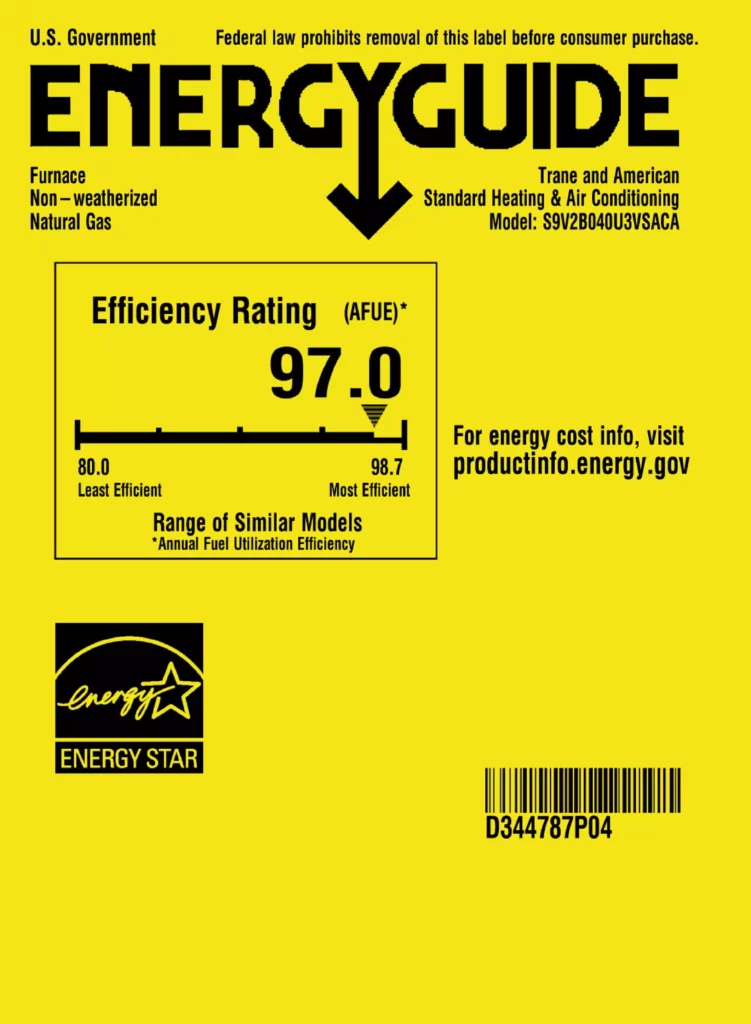
“The times they are a changin”, and furnace and air conditioner efficiency are becoming one of the easiest ways for a home to reduce its carbon footprint.
Local and federal governments are setting minimum efficiency requirements in 2023, so it’s important that you work with a contractor that knows those requirements.
Keep in mind that the minimum requirement is just that, the minimum.
Many upgrades available to increase equipment efficiency will help you reduce your monthly utility bills.
Another aspect to consider when deciding on what new equipment to get is system capacity.
Just because your old furnace was 100,000 BTU/hr doesn’t mean that your new one should be the same size.
Older furnaces are usually between 70% to 80% efficient, whereas newer high-efficient ones are above 95%.
So, you can decrease the installation price of your new system simply by decreasing its capacity.
This is a simple concept, though, and there are more variables to consider, so discuss this idea with a reputable HVAC contractor before making a decision
Related Reading: What is AFUE? Annual Fuel Utilization Efficiency Rate Explained
⭐ What’s in a Furnace Room
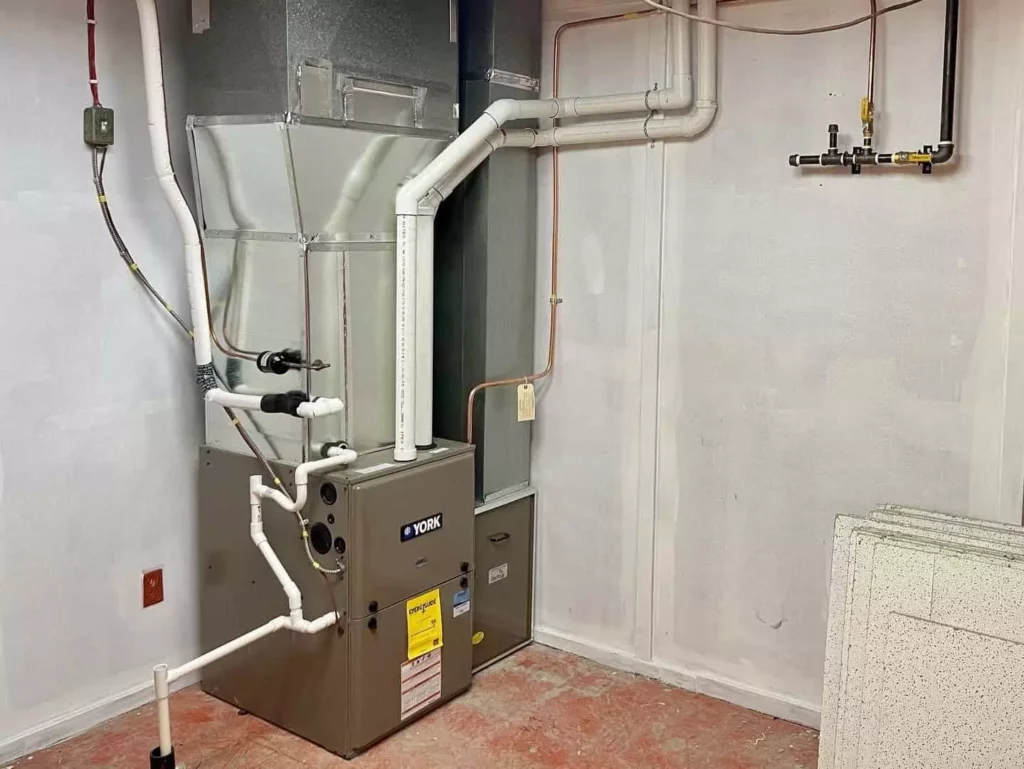
In most residential furnace rooms, you’ll have the furnace, the air conditioning evaporator coil, the water heater, and the electrical panel.
Sometimes, people will use the furnace room as their laundry room.
Now, since there’s some extra space in the furnace room, people will add storage shelves and put anything they can in there. But should they?
✅ PRO TIP: It’s always a good idea to keep the area around your furnace free from dust and debris.
Also, keep some spare furnace filters around so that you never forget to keep them changed.
✅ PRO TIP: Date your filter when you put it in.
This will help you to track how often it should be replaced.
Plus, if you forget to change it and you call a service technician out, they can make fun of you for how long it’s been in there.
✅ PRO TIP: Make sure you put the furnace filter in the right way!
⭐ What Not to Store in Your Furnace Room
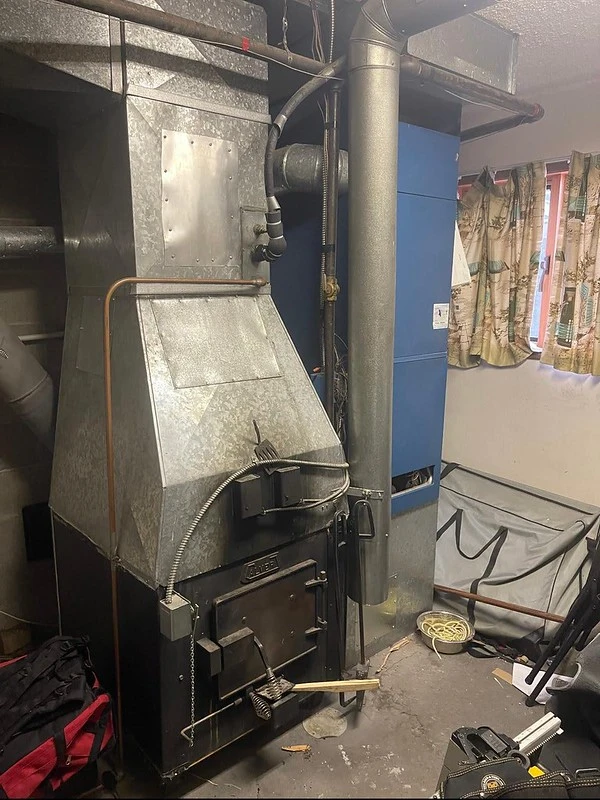
Your heating equipment has internal heavy-duty metal heat exchangers to help them withstand the high temperatures they see during the combustion process.
These heat exchangers are susceptible to chemicals and fumes that could cause them to prematurely rot and rust, leading to an increased potential for carbon monoxide poisoning.
Some of the things that should never be stored in a furnace room are:
- Kitty Litter
- Cleaning and Laundry Detergents, unless stored in closed airtight containers
- Paints or Paint Thinners
- Anything combustible like gasoline
✅ PRO TIP: don’t hang laundry to dry in the furnace room, as high humidity levels are a breeding ground for rust.
⭐ Key Take-Aways About Your Furnace Room

If you can remember anything from this article, remember these two things; there are strict codes related to gas-fired furnaces, so always hire a professional HVAC company to do the work on it.
Keep the space around your furnace free from debris and harsh chemicals so that it doesn’t prematurely fail and lead to carbon monoxide poisoning.
I hope you found this article helpful.
If you’re looking for more insights or additional information about furnaces and other HVAC equipment, you should sign up for our newsletter to stay up-to-date on our newest DIY articles.

